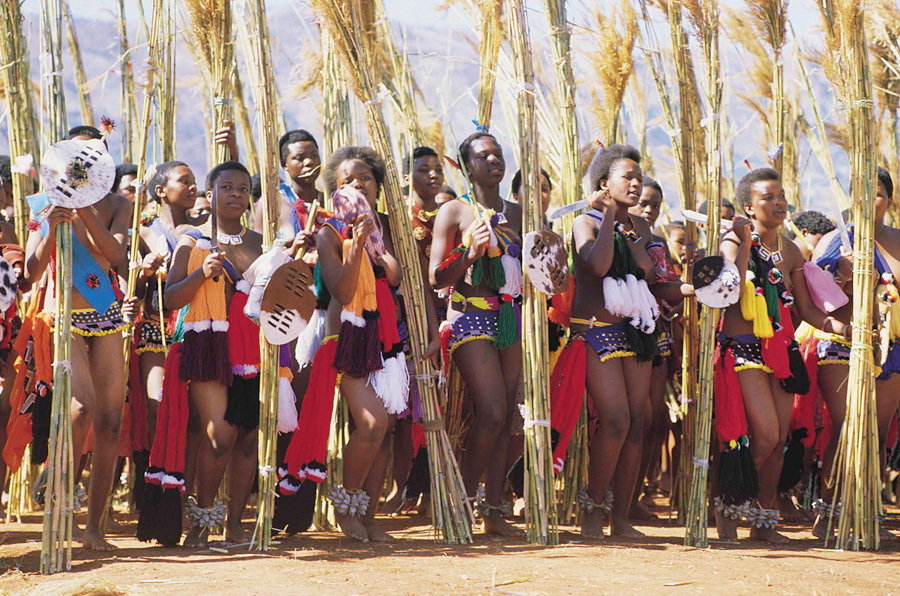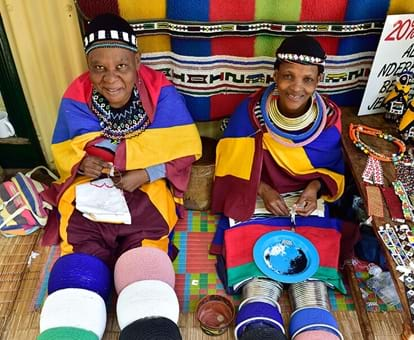The 7-Minute Rule for South African Culture Today
The 7-Minute Rule for South African Culture Today
Blog Article
The Basic Principles Of South African Culture Today
Table of ContentsThe smart Trick of South African Culture Today That Nobody is DiscussingNot known Details About South African Culture Today How South African Culture Today can Save You Time, Stress, and Money.The Greatest Guide To South African Culture TodaySome Ideas on South African Culture Today You Should KnowThe Buzz on South African Culture Today
A matter of significance in Zambian villages is the passing away of liked ones. All participants of the town placed cash, time and effort together for the interment of the deceased.During the mourning period; guys remain outside your home and the ladies remain inside your home of the deceased. After discussing the dead, the town strolls to the location of burial to say their last bye-byes. Songs and dance is a really vital element of the Zambian culture. The different tribal devices have their own dance kinds; nonetheless, makishi is usual among all tribes.
The Main Principles Of South African Culture Today
When it pertains to music, drums are used the most, with a variety of drumming ceremonies. In Zambia, majority of the people are Christian; Protestant and Roman Catholic. There are small teams of Muslims and Hindus, with the remainder adhering to local indigenous tribal beliefs.

South African heritage and culture is exceptionally diverse, and consists of various teams of individuals that each have their own practices and beliefs. Having such a variety of individuals and societies is what makes South Africa so special. In real feeling of the expression, we are a rainbow country.
Making it the 7th on the listing of countries with the most Portuguese people in it outside of Portugal. Portuguese is not just a culture, yet it is also a language and a race. Portuguese individuals stem from the country of Portugal in Europe, nevertheless, due to Portugal (like numerous various other nations in Europe) exploring the world and dominating other nations during the 15th 20th centuries, South Africa has what we call Portuguese South African's living in it.
See This Report about South African Culture Today
Amongst the famous attributes of the topography is a plateau that covers practically two thirds of the facility of the nation. The plateau facility climbs toward the southeast, where it climaxes in the Drakensberg array, component of an escarpment that separates the plateau from the seaside areas. The Drakensburg includes Champagne Castle, the greatest optimal in the country.
The area north of the Witwatersrand, called the bushveld, inclines downward from east to west toward the Limpopo River, which develops the global boundary. The western area of the plateau, the middleveld, also descends in the direction of the west and differs in altitude between the highveld and bushveld. In between the Drakensburg and the eastern and southerly shoreline, the land comes down to the sea.
Nearer the coastline there is a low-lying plain called the eastern lowveld. Southwest of the plateau the nation ends up being gradually extra arid, giving method to the hostile desert of the Great Karroo, surrounded on the eastern by the lower, better sprinkled plateau of the Little Karroo. Separating the dry southerly interior from the sandy littoral of the southern coastline and West Cape is one more array, the Langeberg.
8 Easy Facts About South African Culture Today Explained
The country's racially, ethnically, and politically divided background has generated national and subnational icons that still work as symbols of the country, and others icons that are accepted only by certain groups. The monoliths to white inhabitant occupation and political prominence, such as the Afrikaner Voortrekker ("pioneer") Monument in Pretoria and the Rhodes Monument recognizing the British colonial you could try this out realm builder and Cape prime minister Cecil Rhodes, continue to be sectarian symbols.
The very first modern-day residents were the San ("bushman") hunter-gatherers and the Khoi ("Hottentot") peoples, that herded livestock (South African culture today). The San may have been present for countless years and left evidence of their existence in thousands of old cave paintings ("rock art"). Bantu-speaking clans that were the forefathers of the Nguni (today's amaZulu, amaXhosa, amaSwazi, and vaTsonga individuals) and Tswana-Sotho language groups (today's Batswana and Southern and Northern Basotho) migrated below why not try here eastern Africa as early as the fifteenth century

Both previous republics of the Orange Free State and Transvaal (South African Republic) were established by Afrikaner inhabitants who defeated and dispossessed the Basotho and Batswana. Lesotho would have been forcibly integrated right into the Orange Free State without the expansion of British protection in 1869. The best unification of the country arised from the South African Battle (18991902) between the British and both Afrikaner republics, which minimized the country to spoil at the start of the twentieth century.
Afrikaners traditionally considered themselves the just true South Africans and, while providing complete citizenship to all citizens of European descent, denied that status to people of color till the autonomous change of 1994. British South Africans maintain a sense of social and social connection to Great Britain without deteriorating their identification as South Africans.
The Single Strategy To Use For South African Culture Today
The diversity and fragmentation within ethnic collections and the balance of stress in between those teams during the twentieth century stopped interethnic civil conflict. While intergroup stress over resources, privileges, and political prominence continue to be, those disputes are as likely to pit Zulu against Zulu as Zulu against Xhosa or African against Afrikaner.
From colonial India, British vendors and administrators brought the rounded metal ornamental roofings and slim lace job columns that still exemplify the outdoor patios of homes in the areas and cities throughout the nation. Holy places contribute an essential building aspect also in the smallest towns. Along with the soaring steeples and timeless stonework of Afrikaans Dutch Reformed churches, Anglican churches, synagogues, mosques, and Hindu temples supply selection to the spiritual building scene.

Butchering and the developing of standard grain beer see this are essential in safeguarding the participation and goodwill of the ancestors that are considered the guardians of good luck, success, and well-being. Indian communities keep their native cooking customs and apply them on Islamic and Hindu ritual and ceremonial events. Afrikaners and Coloured people gather at weekend breaks and unique celebrations at multifamily barbeques called braais, where area bonds are reinforced.
Since this was the primary financial venture of both black Africans and white colonists, problem between those groups focused on the ownership of grazing land and animals. In 1867, the largest diamond down payments on the planet were found at Kimberley in the west central area. The riches from those fields helped fund the exploitation of the biggest gold reef worldwide, which was discovered on the Witwatersrand in 1886.
The Best Guide To South African Culture Today
This caused misconceptions and calculated misstatement in the transactions of white settlers and federal government officials with African principals during the colonial period (South African culture today). In the facility of African gets, some facets of public and primarily "tribal count on" land period were protected, and even in white backwoods, kinds of communal tenure were still exercised in locations with African neighborhoods
After the autonomous improvement of 1994, programs for land restitution, redistribution, and reform were instituted, but progression has been slow. The white minority still regulates eighty percent of the land. Following farming land intrusions in Zimbabwe, the Department of Land Matters has promised to speed up land redistribution.
Report this page